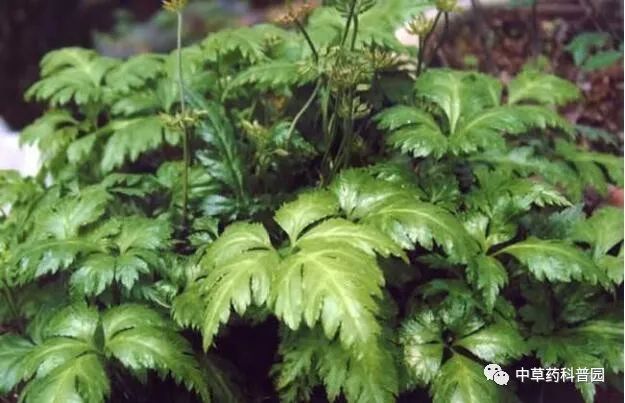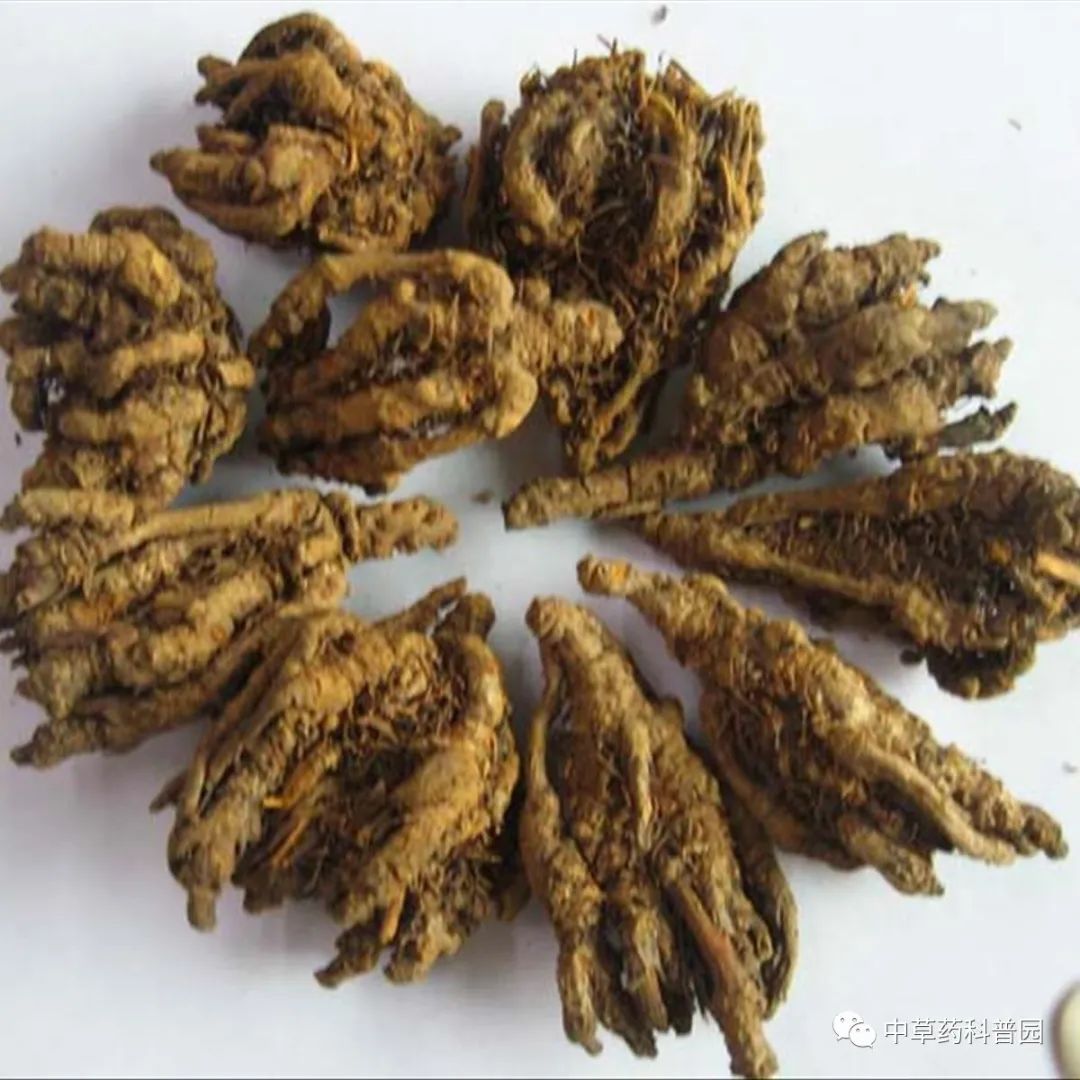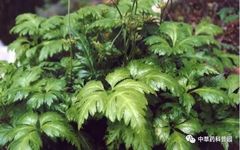 Huang Lian Encyclopedia
Huang Lian Encyclopedia
【Source】Huang Lian (Coptis chinensis) is a perennial herbaceous plant belonging to the Ranunculaceae family, specifically the rhizome, roots, and leaves of Coptis chinensis or Coptis teeta.
【Related Names】Coptis, Huang Lian, Wang Lian, Wei Lian, Chuan Lian, Ji Zhua Lian.
【Properties andMeridian Affinity】Cold in nature, bitter in taste. It enters the Heart, Spleen, Stomach, Liver, Gallbladder, and Large Intestine meridians.
【Characteristics】This herb is extremely bitter and cold, clearing heat and drying dampness, and is primarily directed towards the Heart and Stomach-Spleen meridians, while also affecting the Liver, Gallbladder, and Large Intestine meridians. It clears heat, drains fire, and resolves heat toxins, while also drying dampness and eliminating damp-heat toxins, making it a key herb for treating damp-heat and fire toxins. Compared to Huang Qin (Scutellaria baicalensis), it has a stronger ability to clear heat and dry dampness, particularly affecting the Heart and Middle Jiao (Stomach-Spleen), excelling at clearing Heart and Stomach fire and eliminating damp-heat from the Middle Jiao.
【Functions】Clears heat and dries dampness, drains fire and detoxifies. It belongs to the category of clearing heat herbs, specifically those that clear heat and dry dampness.
【Indicationsand Symptoms】Used for damp-heat obstruction, nausea and acid regurgitation, diarrhea, jaundice, high fever with delirium, excessive Heart fire, irritability and insomnia, blood heat with vomiting or nosebleeds, red eyes, toothache, diabetes, and carbuncles; externally for eczema, damp sores, and ear discharge. Jiu Huang Lian (Wine-prepared Huang Lian) is effective for clearing upper Jiao fire heat, used for red eyes and oral ulcers. Jiang Huang Lian (Ginger-prepared Huang Lian) harmonizes the Stomach and stops vomiting, used for cold-heat counterflow and damp-heat obstruction with nausea. Yu Huang Lian (Evodia-prepared Huang Lian) soothes the Liver and harmonizes the Stomach, used for Liver-Stomach disharmony with nausea and acid regurgitation.
【Dosage and Administration】Internal use: decoction, 1.5-3g; powdered, 0.3-0.6g per dose; or in pills or powders. External use: appropriate amount, ground into powder for topical application; or decocted for washing; or made into a paste; or used as juice.
【Precautions】Use with caution in cases of Stomach deficiency with nausea, Spleen deficiency with diarrhea, or nocturnal kidney leakage.
【Origin】Mainly produced in the southwestern regions, with the best quality found in the Daba Mountain area of Sichuan, known as Chuan Lian. Due to its branched rhizomes resembling chicken feet, it is also called Ji Zhua Lian. Those produced in Deqin, Weixi, and Tengchong in Yunnan are of slightly inferior quality, known as Yun Lian.
【Harvesting and Processing】Harvest in autumn, remove fibrous roots and soil, dry, and remove any remaining fibrous roots.
【Processing and Preparation】
Huang Lian: Remove impurities, soak until soft, slice thinly, and dry, or crush when needed.
Jiu Huang Lian: Take clean Huang Lian, and stir-fry with wine (Appendix II D) until dry. For every 100kg of Huang Lian, use 12.5kg of Huangjiu (yellow wine).
Jiang Huang Lian: Take clean Huang Lian, and stir-fry with ginger juice (Appendix II D) until dry. For every 100kg of Huang Lian, use 12.5kg of fresh ginger.
Yu Huang Lian: Take Wu Zhu Yu (Evodia) and boil with an appropriate amount of water, mix the decoction with clean Huang Lian, and stir-fry until the liquid is absorbed and dry. For every 100kg of Huang Lian, use 10kg of Wu Zhu Yu.
Jiu Huang Lian, Jiang Huang Lian, and Yu Huang Lian should be tested for total ash content, which must not exceed 4.0%.
【About Processing】
In the prescriptions used by Zhang Zhongjing, Huang Lian was not specified for processing, and all were used in their raw form. However, in modern times, Huang Lian is processed: stir-fried Huang Lian to reduce its bitter cold nature; ginger-processed Huang Lian to enhance its heat-clearing and vomiting-stopping properties; wine-stir-fried Huang Lian to clear upper Jiao fire; and Wu Zhu Yu-processed Huang Lian to clear the Liver and treat Jueyin disease.

【Modern Pharmacological Research】
Contains berberine, along with coptisine, methylcoptisine, palmatine, berberrubine, and other alkaloids. Exhibits antibacterial, antiviral, and antiparasitic properties, promotes bile secretion, anti-diarrheal, anti-inflammatory, and anti-cerebral ischemia effects, as well as antihypertensive, anti-myocardial ischemia, anti-myocardial infarction, anti-arrhythmic, central nervous system inhibition, anti-diarrheal, anti-ulcer, promotes bile secretion, lowers blood sugar, inhibits DNA synthesis, and inhibits platelet aggregation.

【Clinical Applications】
① For pain in the epigastric region due to excessive consumption of hot foods, or persistent vomiting leading to counterflow: Huang Lian 18g, Gan Cao (Licorice, roasted) 3g. Prepare a decoction with one large cup of water, simmer until reduced to seven-tenths, strain and take warm. (From “Heart Medicine Collection”)
② For epigastric pain unresponsive to other treatments, use a cold formula for heat: Huang Lian 18g, Fu Zi (Aconite, processed, peeled) 3g. Finely chop. Prepare a decoction with three slices of fresh ginger, one jujube, and one and a half cups of water, simmer until reduced to one cup, strain and take warm. (From “Medical Transmission”)
③ For persistent vomiting due to damp-heat syndrome, day and night without relief: Huang Lian 0.9-1.2g, Su Ye (Perilla leaf) 0.6-0.9g, decoct together and take immediately. (From “Damp-Heat Disease Chapter”)
④ For hemorrhoids: Huang Lian 60g, prepare a paste, add equal parts of Mangxiao (Glauber’s salt) and Bing Pian (Borneol) 3g. Apply to hemorrhoids for immediate relief. (From “Danxi’s Key to Treatment”)
⑤ For oral ulcers: Huang Lian, Pu Xiao (Sodium bicarbonate), and Bai Fan (Alum) each 15g, with 30g of Bo He (Mint) leaves. Grind into a coarse powder, place in the gallbladder of a yellow cow during the twelfth lunar month, hang in the wind for two months, then remove. When encountering oral ulcers, grind finely and apply to eliminate heat and saliva for healing. (From “Complete Book of Jingyue”)
 Huang Lian Dietary Therapy
Huang Lian Dietary Therapy
Huang Lian Tea
Ingredients: 10g green tea, 6g Huang Lian, appropriate amount of ginger juice and brown sugar.
Preparation: Brew the tea and Huang Lian with boiling water for fifteen minutes, then add ginger juice and brown sugar to taste.
Effects: Clears heat, promotes dampness elimination, and detoxifies, primarily used for acute dysentery.
Huang Lian Bai Tou Weng Congee
Ingredients:10g Chuan Huang Lian, 10g Bai Tou Weng (Pulsatilla)
Preparation:In a clay pot, add 300ml of water, soak, and simmer until reduced to 150ml, strain to obtain the decoction. Add 400ml of water to glutinous rice and cook until the rice blooms, then mix in the decoction and cook into congee, ready to eat.Take three times a day, warm.
Effects:Clears heat, cools the blood, and detoxifies.
Indications:For toxic dysentery, symptoms include sudden onset, fresh purple blood in stools, abdominal pain with urgency, and severe heat and irritability.

 Huang Lian’s Story
Huang Lian’s Story
It is said that a long time ago, in a village on the old mountain of Huangshui Dam in Shizhu County, there lived a doctor named Tao. His wife gave birth to two sons and two daughters. One year, a natural disaster struck, and his wife and two sons died one after another. Due to poverty, he could not raise his three daughters, so he gave one away, leaving only the youngest daughter, who depended on her father for survival. Doctor Tao hired a helper named Huang Lian to help him plant flowers and herbs. Huang Lian was kind-hearted, diligent, and honest.
Before long, many people in the Huangshui Dam area fell ill with a similar disease, characterized by high fever, irritability, chest tightness, and vomiting, gradually rendering strong laborers unable to work. The sensible youngest daughter of the Tao family was a lucky one; she did not contract this strange illness and could still do some household chores.
One day, while out for a spring outing, Tao’s youngest daughter suddenly discovered a wild grass with serrated leaves, many umbellate flowers, in yellow, green, and yellow-green colors, looking very beautiful. She casually pulled up the wild grass, noticing that the roots resembled lotus beads, chicken feet, or curved bridge rods. Excited, she brought it home and planted it in the garden. Huang Lian, every time he fertilized and watered the flowers and herbs, did not forget to care for that wild grass.
The next summer, Doctor Tao went out to treat patients and did not return home for over ten days. During this time, Tao’s youngest daughter fell ill, refusing to eat or drink, and grew thinner by the day, until she was just skin and bones. Doctor Tao’s friends tried every means but could not cure her illness.
Huang Lian thought, since Tao’s daughter had planted the wild grass with yellow-green flowers, why not try it? So he pulled up the wild grass, cleaned it, and boiled it with the roots and leaves. After a while, he lifted the lid and saw that the wild grass and soup had turned yellow. Huang Lian took a spoonful, intending to give it to the youngest daughter, but suddenly thought, what if it was poisonous and harmed her? It would be better to try it himself first; if he did not die, then she could drink it. He immediately drank it all, only to find it very bitter.
After two hours, Huang Lian saw that he was still alive, his hands and feet could move, he could speak, hear, and see, and he believed the wild grass was not poisonous. He then brought a bowl to Tao’s youngest daughter. Strangely, after drinking the wild grass soup, she recovered, and she said to Huang Lian: “This is a good medicine, but it is too bitter.” At that moment, Huang Lian, who had secretly loved Tao’s youngest daughter for a long time, felt heartbroken and said: “I have waited in vain for someone, but I have not waited for her, perhaps my fate is as bitter as this!”
When the villagers learned of this news, they all went to dig up this wild grass to make soup, and everyone recovered. Soon, Huang Lian died with unrequited love in the Tao family, and before he died, Tao’s youngest daughter finally realized his feelings. To commemorate him, people named this bitter herb that clears heat and detoxifies as Huang Lian.

